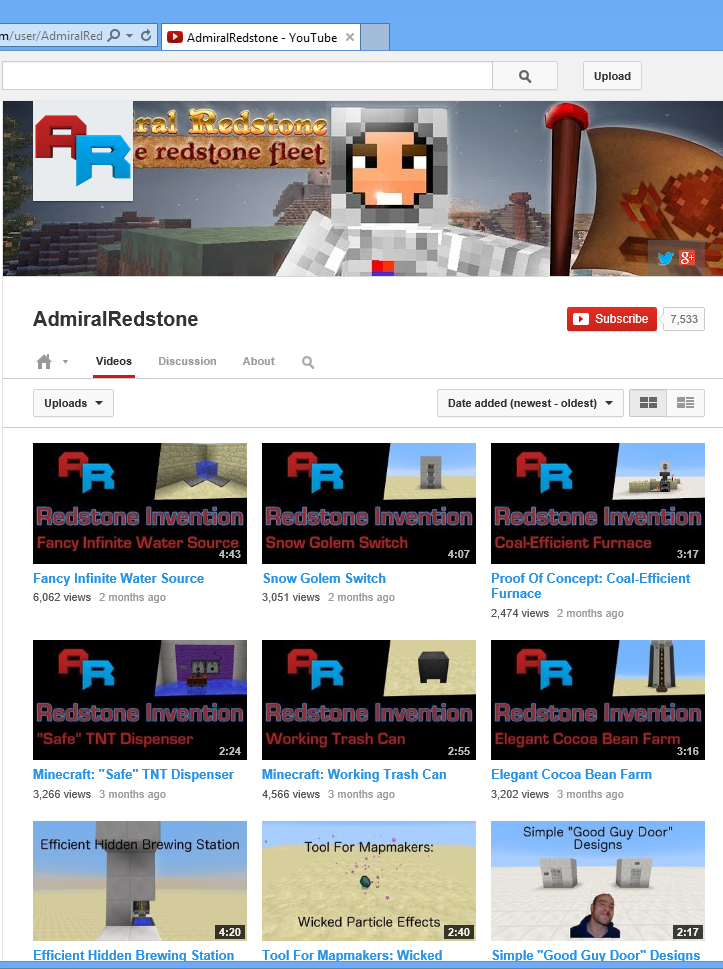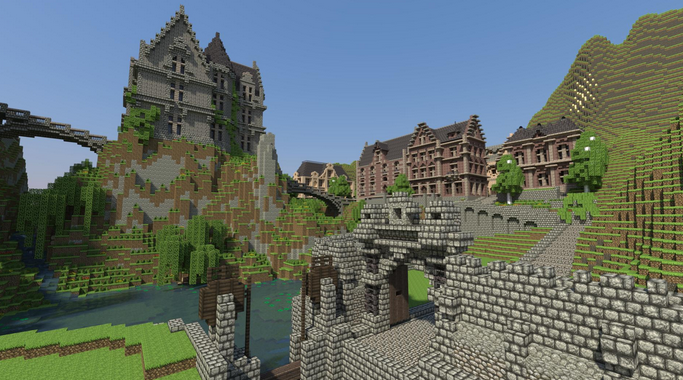Minecraft has taken the world by storm, and kids can remain obsessed with it for months or even years. If you have already successfully navigated the first few months of Minecraft with your kids, your children might be ready to take advantage of some of the more advanced opportunities and features of Minecraft.
An amazing thing is that they can learn a wide range of college-level skills while doing so—and they will be begging for more!
Circuit Design: Electrical Engineering 101
Most advanced Minecrafters have transitioned from the tablet version to the PC version. The PC version has capabilities that inspire a great deal of engineering creativity. It allows the players to use “redstone circuits” that can be used to create electrical wiring for lighting virtual houses or powering.
The system also includes basic circuit functionality like logic gates, clocks, memory, and mechanisms for moving things or taking other actions. This allows the kids to build more complicated creations such as combination locks, traps, and so on. Many of the creations are things that I only learned how to make in my college electrical engineering course on circuit design!
Some kids have created their own YouTube personas (such as “Admiral Redstone”) to showcase their creations and give instructions, so that kids can research possible ideas and learn to make creations on the web. They don’t even realize this is advanced educational material. They just know they secured their storage chest with a code, or made a zombie trap, which is very cool!

Mods: A Motivation to Learn Java
Minecraft allows anyone to take the code and modify parts of it. The new code is called a “mod.” Minecraft-obsessed children are very interested in having new or different materials, or meeting novel creatures, and mods open up this possibility. The desire to write mods can be a powerful motivator to learn Java. It is actually not very difficult to write simple mods because only a few lines of code need to be changed to change the game slightly.
However, the world of mods may introduce a lot of demands for parent time to help as well as frustration for both kids and adults. Before writing or editing mods, kids will start by downloading mods others have written. Since mods are user-generated, there is no guarantee that they work.
Downloading and installing them requires multiple steps, and different mods can be installed on top of one another, but they are not always compatible with one another. There is no pretty user interface to guide you. We experienced a fairly high percentage failure, especially early on, and it took some time for my 9-year-old to learn the steps (I didn’t even try with the 7-year-old). If the mods don’t work, it is necessary to restore a backup, or reinstall the game and start from scratch if the backup was forgotten.
In addition, the mods are posted on websites that are almost always ad-funded. The advertising typically includes banner ads flashing “Download! Download!” Even if you avoid the misleading banners and hit the correct download link, you typically pull up a popup ad and have to wait for it to disappear (15 seconds or so). If you click too soon, official-looking menus appear that ask you to install software, and before you know it, your search defaults have been changed, new toolbars are installed on your browser, and multiple other adware programs have appeared on your computer. I don’t know whether these programs are benign or whether they contain true malware. Even after reviewing everything with my son, I still came back a few times to find adware on the computer. What that means in practice is that installing mods safely requires close supervision until children are fairly sophisticated computer users (probably middle school or above). Even a reasonably savvy adult can get confused.
Minecraft as an Educational Tool
My son first encountered Minecraft in a summer camp for computer programming. When I first heard he was playing “video games” at camp, I was a little annoyed! But Minecraft is used as an educational tool across the country. Many technology-themed camps, such as Internal Drive, offer weeklong programs dedicated solely to Minecraft. Given the complexities of the game and the technology, many parents might be relieved to find someone else to teach these skills to their kids. I found that my son took the initiative to do much more ambitious projects in Minecraft after the camp was over.
3D Design and Printing
A less well known opportunity for creativity is the ability to use Minecraft as 3D design software, for 3D printing. A 3D printer (such as the Makerbot Replicator series) makes a real-life three-dimensional object from a computer-generated design. There are services such as Minetoys, which allows the Minecraft-obsessed child to order a full color replica of their own Minecraft avatar (at a cost of about $20) to be 3D printed by a mail-order 3D printing service such as Shapeways. It takes a few weeks to arrive, so if you want it for a gift, you must plan ahead! There are also services such as Mineways or Minecraft.Print() that allow you to order 3D prints of buildings or structures created in Minecraft.
There is public server, Printcraft.org, which allows you to create items for printing and export them with the push of a single button—this children can do on their own. The creations can either be ordered on Shapeways or another public 3D printing service, or else printed on a home or work 3D printer if you have access to one. A few cities also have 3D printing cooperatives like the “Tech Shop” where you can go to print 3D designs.
I introduced my kids to 3D design programs for 3D printing (such as the 123D series from Autodesk) after they were already deep into Minecraft. They picked up the other programs immediately. So you can think of Minecraft as a great introduction to Computer Aided Design (CAD) software!
Kids may get motivated to host their own servers. This may require a computer-savvy adult to help deal with firewall settings to allow friends to join over the internet. It also requires a computer that can be left on for people to join remotely, with enough memory and processing power to support multiple players at once.
Another option is to rent a hosted server from a service. Then the computer and software are maintained by the service, for a monthly fee. There is a web interface for keeping the game up to date and making choices about how the game works, as well as who can be admitted to the server. It can cost $8-$15/month to do this.
Hosting a server gives kids the chance to make choices, enforce rules with other players, and generally be a leader. The “op” for the server has special powers and can create things for the other players.
Hosting also comes with responsibility. I created an email to my kids’ friends and their parents stating the rules of the server (reminding children not to “grief” and destroy other kids’ creations) and explaining that it is private and only invited friends can play.
Social/Emotional Skills
Advanced Minecrafting has a large social component. The kids collaborate on creations like roller coasters, create games and puzzles for their friends, and give each other gifts. The kids learn from the work of others posted on the internet, and may be motivated to post their own work to the public as well. They need to set and enforce rules, and work out conflicts. There have definitely been tears in my house along the way, as well as numerous incidents of theft and destruction of virtual goods and creations, both intentional and accidental. But I’ve been surprised and pleased at how well my children and their friends have learned to navigate the environment, and how savvy they’ve become along the way. The younger ones often rise to the occasion.
The world of Minecraft provides a relatively safe environment to introduce the potential risks of social interaction over the internet. It’s been very important for me to keep a close eye on what is happening, but I’ve also been pleased at how much responsibility my children have learned to take towards avoiding problems and respecting boundaries. Maybe they’ve grown mature, but I’m sure a big part of their good behavior stems from the fact that the threat of losing Minecraft time is the strongest possible motivator to follow the rules!
Links:
Offical minecraft site:
Redstone circuits:
http://www.minecraftopia.com/minecraft_redstone
http://minecraft.gamepedia.com/Redstone_circuit
http://minecraft.wikia.com/wiki/Redstone_Circuits
http://www.youtube.com/user/AdmiralRedstone
3D printing:
http://www.minecraftprint.com/
http://www.printcraft.org/getstarted
http://www.realtimerendering.com/erich/minecraft/public/mineways/
http://www.techshop.ws/3_D_Printing.html
Internal Drive camp:
Posted on 1/10/2014
Susan Athey is an economics professor at Stanford Graduate School of Business, where her research and teaching focus on the economics of the internet, online advertising and news media, and the statistical analysis of big data. In 2006 she became the first woman to win the John Bates Clark Medal for the best American economist under the age of 40. She was inducted into the National Academy of Science in 2013. She is a long-term consultant to Microsoft, and also advises a few technology startups. She lives in Palo Alto, California with her husband and three young children. She loves sharing her passion for technology with kids, while navigating all of the challenges that creates.













Leave A Comment
You must be logged in to post a comment.